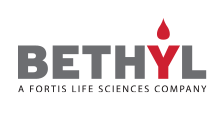Rabbit anti-CSN3 IHC Antibody Affinity Purified

Catalog #
CSN3
Human
IHC
Rabbit
Polyclonal
Whole IgG
Between 325 and 375
IgG
Unconjugated
Antigen Affinity Purified
Product Details
Human
Guinea Pig,
Mouse,
Horse,
Zebra Finch,
Turkey,
Dog,
Chicken,
X. tropicalis,
Bovine,
Monkey,
Rat
Human
2 - 8 °C
1 year from date of receipt
CSN3 is one of eight subunits (CSN1 to 8) of the highly conserved COP9 signalsome (CSN) complex originally identified as a regulator of light-mediated development in Arabidopsis. Characterization of CSN from yeast to mammals reveals its function as a modulator of signal transduction pathways involved in a variety of cellular and developmental processes. One of the major functions of the CSN is the regulation of protein degradation via intersection with the ubiquitin-proteasome pathway and regulation of E3-ubiquitin ligases. The CSN also possesses kinase activity. CSN3 is the kinase associated with the CSN complex that phosphorylates signal transducers such as I-kappa-Balpha, p105, and c-Jun. Human CSN3 maps to the Smith-Magenis syndrome locus. Microdeletions in this locus results in mental retardation, skeletal abnormalities, sleep disorder, and neurobehavior anomalies.
Alternate Names
COP9 complex subunit 3; COP9 constitutive photomorphogenic homolog subunit 3; COP9 signalosome complex subunit 3; CSN3; JAB1-containing signalosome subunit 3; SGN3; signalosome subunit 3
Applications

